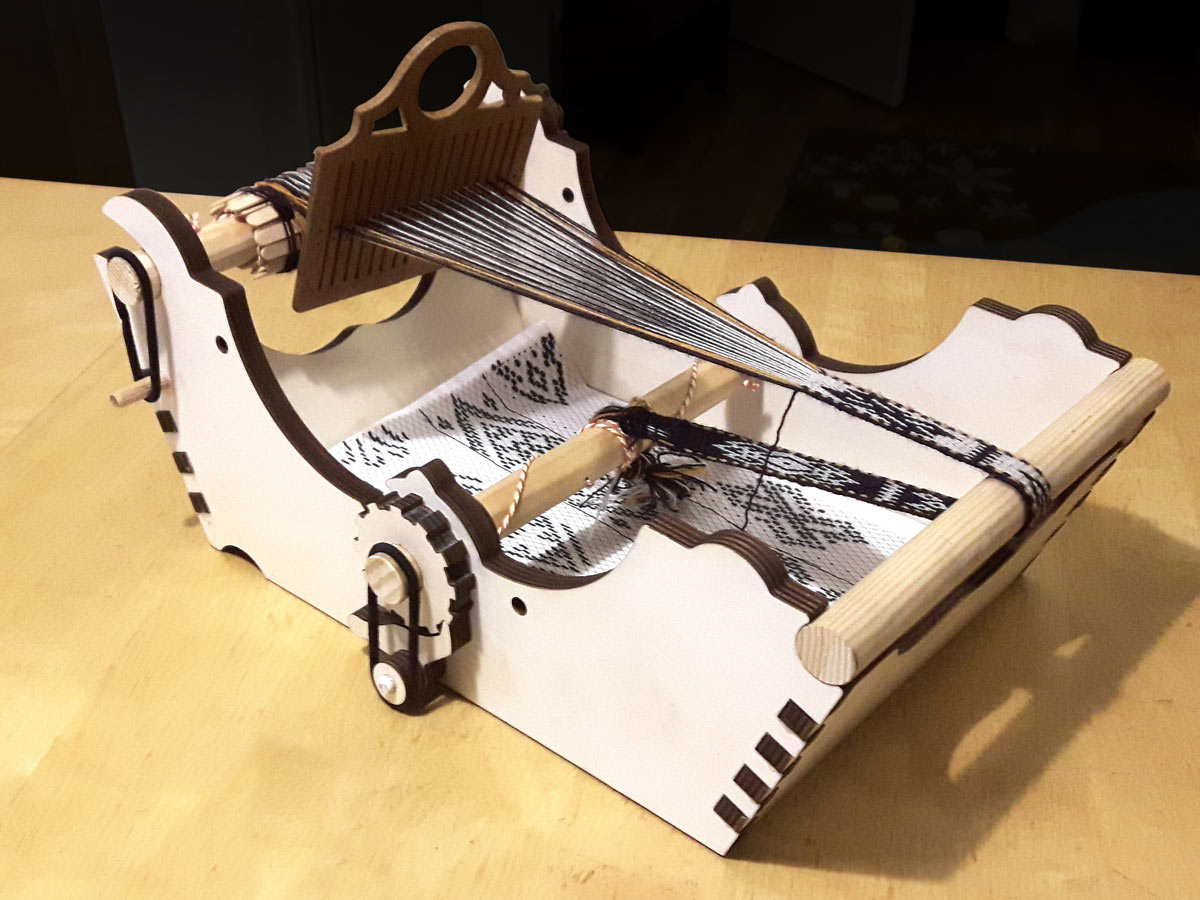My wife showed me some pictures of old Norwegian box looms and asked me to make something similar. The reason being that a back-strap loom, worn on the body, can be impractical with small children running around. I’m not much of a woodworker, so I decided to design something that could be laser cut and then assembled with a minimum of work.
This box loom is designed for use with a rigid heddle or for card weaving. It can be used on a table or on your lap, and the work can be dropped at a moment’s notice when something else (kids, pets, etc.) requires attention right now.
The cloth and warp beams are held in slots rather than holes. This makes construction easier, and, as a bonus, you can remove and set aside an unfinished project if something more interesting comes along. Simply release the tension, carefully take out the beams, roll up your project, and secure it with rubber bands.
If you build more than one loom, the recesses on the lower edge allow for easy stacking.
Once you have the laser-cut parts, the rest of the loom can be made with the most basic of woodworking tools. All measurements are in millimeters, but none are so critical that they can’t just be eyeballed.





















